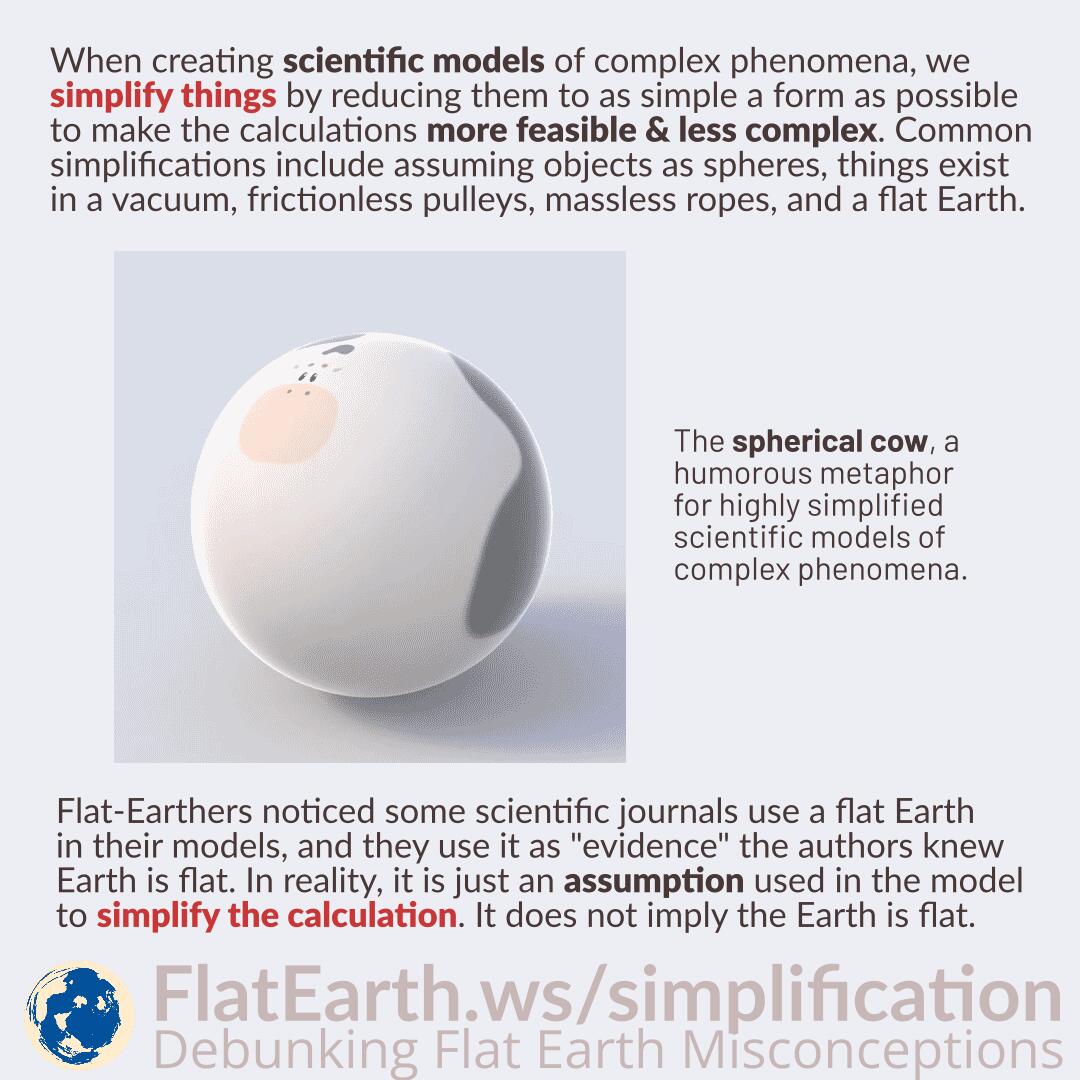When creating scientific models of complex phenomena, we simplify things by reducing them to as simple a form as possible to make the calculations more feasible and less complex. Common simplifications include assuming objects as spheres, things exist in a vacuum, frictionless pulleys, massless ropes, and a flat Earth.
Flat-Earthers noticed that some scientific journals use a flat Earth in their models, and they use it as “evidence” the authors knew Earth is flat. In reality, it is just an assumption used in the models to simplify the calculation. It does not imply the Earth is flat.
In basic mechanics, models are often created to assume a vacuum environment. Under such an assumption, drag is nonexistent. Without accounting for the drag, the calculation that requires calculus (or even impossible to solve analytically) becomes solvable using basic arithmetic. If the drag is insignificant like if the objects are rigid and slow-moving, the results will be close enough to reality.
If we are creating a 10-meter bridge, then the effect of Earth’s curvature is minuscule. Therefore, we can ignore it in our model. The result will still be accurate even if the Earth is a sphere. On the other hand, if we create a 3-km-long and 300-meter-high bridge, we have to factor in Earth’s curvature in our model because it will be significant enough to affect the results.
Just because a model assumes a flat-Earth, it does not mean it proves a flat-Earth. Treating a model as having exactly the same characteristics as the real thing is the fallacy of reification.
References
- Reification (fallacy) – Wikipedia


